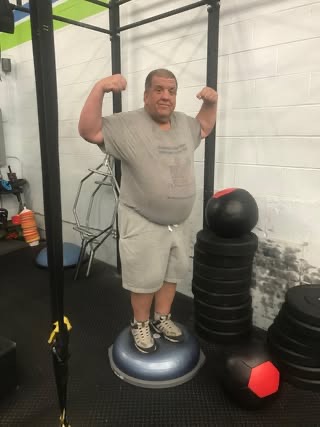There will be a separate article dedicated to balance exercises using the BOSU Ball.
.
Balance Training for Parkinson’s Disease: Real Strategies from Real People
When it comes to managing Parkinson’s disease, improving balance is one of the most powerful tools we have. Falls are a common concern, but targeted balance exercises can strengthen the body, build confidence, and help people live more actively and independently. The good news? There’s no one-size-fits-all approach—and there doesn’t need to be.
Here’s a practical, easy-to-follow guide to balance training, inspired by real people in the Parkinson’s community who are making it work.
1. Static Balance Exercises (Stable Position) These are great for beginners and help train the body to stay upright when still.
- Tandem Stance: Stand heel-to-toe with one foot in front of the other. Hold for 30 seconds, then switch sides. Use a wall or counter for support.
- Single-Leg Stand: Balance on one foot for up to 30 seconds while holding onto a stable surface.
- Seated Balance: Sit on an armless chair or exercise ball and lift one foot—or both feet—off the ground for short bursts.


2. Dynamic Balance Exercises (While Moving) These challenge coordination and movement while improving agility.
- Marching in Place: Lift your knees high and swing your arms. Great for posture and rhythm.
- Side Stepping or Grapevine: Walk sideways or perform cross-over steps along a wall.
- Weight Shifting: Rock side-to-side or front-to-back while standing tall, feet shoulder-width apart.
3. Functional, Everyday Balance Training These exercises mimic real-life tasks, building strength and resilience.
- Sit-to-Stand: Rise from a chair without using your hands.
- Reaching While Standing: Practice reaching across your body or to the floor.
- Obstacle Stepping: Step over small cones, tape lines, or boxes in various directions.
Sean practices these outdoors—on gravel, sand, dry leaves, and even uneven trails. He adds multidirectional movements like side stepping, turning in place, and stepping over natural obstacles.

Gary works on cone drills, lifting his legs high and passing weights around his body to challenge core control.
4. Equipment-Based Balance Training Add some tools to keep things interesting and effective.

- BOSU Ball (flat side down): Stand, squat, or march on it to strengthen stabilizers. Jim Schroeder swears by it!
- Foam Pad or Balance Disc: Great for home training. Try standing with eyes closed for an extra challenge.
- Balance Beam or Tape Line: Walk heel-to-toe for precision.
5. Multisensory & Cognitive Drills These engage both brain and body—important for Parkinson’s.
- Dual-Task Walking: Walk while counting backward or tossing a ball.
- Tai Chi or Dance: Helps with rhythm and body awareness. Michelle swears by her 20+ years of yoga and weekly dance/aerobics classes.
- Boxing (like Rock Steady Boxing): Jim, Steven, and Katheryn all integrate boxing into their routines for footwork, posture, and reactive balance.
6. Other Creative Ways People Train Balance

- Phyllis Cobb Ludwig rides her horse, which challenges balance through movement and posture.
Dan uses the uneven stones in his garden as a natural balance obstacle.
I like to Paddleboard… it takes a few tries to figure it out! There is a bonus video after the paddleboarding…
Tips for Success
- Start slow and build gradually
- Always have a stable surface nearby
- Train consistently—even 10 minutes a day can help
- Combine balance and strength
- Make it fun: walk the dog, garden, dance
Whether you’re walking across a rocky trail like Sean, working one-legged on a BOSU like Patricia, or balancing through yoga like Michelle, there’s no wrong way to get better at balance. The most important thing is to start—and keep going.
Balance is a skill. With practice, it gets stronger. Just like you.
